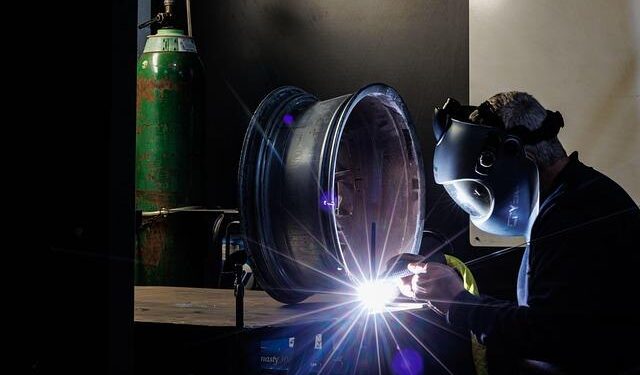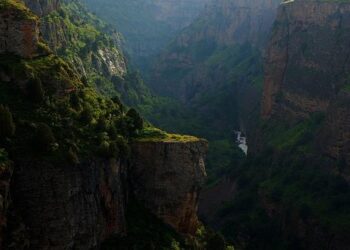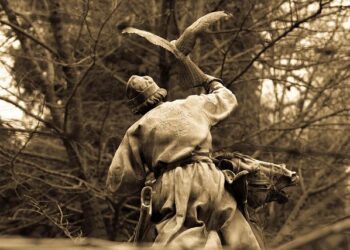Archaeologists have uncovered new insights into a significant Bronze Age metalworking center in Kazakhstan, shedding light on the region’s early technological advancements and trade networks. Recent excavations and analyses, detailed in Archaeology Magazine, reveal sophisticated methods of metal production that highlight the central role this site played in the development of metallurgy across Central Asia. This discovery not only enhances our understanding of ancient industry but also underscores Kazakhstan’s importance in the broader narrative of Bronze Age civilization.
Bronze Age Metalworking Center Unearthed in Kazakhstan Sheds Light on Ancient Craftsmanship
Archaeologists working in the steppe regions of Kazakhstan have uncovered a remarkably well-preserved site that offers unprecedented insight into Bronze Age metalworking techniques. The excavation revealed multiple furnaces, slag deposits, and an array of metal artifacts, indicating a sophisticated production hub dating back over 3,000 years. This discovery not only highlights the technical prowess of ancient artisans but also suggests the area served as a major center for the distribution of bronze tools and ornaments across Central Asia.
Among the findings were copper ingots, bronze blades, and intricately shaped decorative items, showcasing a range of craftsmanship skills. Laboratory analyses are currently underway to determine the exact composition and sources of the metals used. Key features of the site include:
- Multiple clay furnaces with evidence of high-temperature smelting
- Residues of copper and tin alloys indicating advanced metallurgical knowledge
- Specialized molds suggesting standardization of tool production
| Artifact Type | Material | Estimated Age |
|---|---|---|
| Ingot | Copper | 3200 years BP |
| Blade | Bronze (Cu-Sn Alloy) | 3150 years BP |
| Decorative Pendant | Bronze | 3100 years BP |
Advanced Metallurgical Techniques Reveal Sophistication of Early Artisans
Recent analyses conducted at the Bronze Age metalworking site in Kazakhstan have uncovered technological advancements unparalleled for their era. Using a combination of microscopic examination and chemical composition testing, researchers identified a variety of sophisticated metallurgical methods that suggest early artisans possessed a deeper understanding of alloying and metal treatment than previously assumed. Among the findings were evidence of controlled heating processes that enhanced the durability of bronze artifacts, pointing to a systematic approach to metal refining.
Moreover, the discovery of diverse toolkits and casting molds reveals a broad spectrum of production techniques, including:
- Advanced lost-wax casting to produce intricate designs
- Cold hammering combined with annealing for shaping metals
- Early experimentation with copper-tin ratios to optimize strength and malleability
| Technique | Description | Artifact Examples |
|---|---|---|
| Lost-Wax Casting | Wax model melted to create complex shapes | Decorative bracelets, ceremonial daggers |
| Annealing | Heating metal to reduce brittleness | Axes, spearheads |
| Alloy Optimization | Adjusting tin content for strength | Tools, ornaments |
Experts Urge Preservation and Further Excavation to Unlock Regional Trade Networks
Archaeologists emphasize the critical need to protect the recently uncovered Bronze Age metalworking site in Kazakhstan to better understand its role in ancient regional commerce. The site’s diverse array of metallurgical artifacts suggests it was a pivotal hub in a network linking Central Asia with neighboring civilizations. Experts warn that without immediate conservation efforts, invaluable insights into early trade dynamics and technological exchange risk being lost to natural degradation and modern development pressures.
Calls for expanded excavation aim to reveal more about the production techniques and the extent of trade connections facilitated through this center. Preliminary findings indicate:
- Complex metal alloy compositions pointing to advanced knowledge beyond the local area.
- Trade goods from distant regions such as copper sourced from the Altai Mountains and imported raw materials from the Iranian plateau.
- Artifacts linked to ritual and commercial traditions, suggesting a multifaceted economy.
| Artifact Type | Material Source | Estimated Trade Reach |
|---|---|---|
| Bronze Blades | Local Copper & Tin | Central Asia |
| Gold Ornaments | Altai Mountains | Far East |
| Beads & Pendants | Imported Carnelian | Southwest Asia |
Such discoveries underscore the urgent importance of sustained archaeological efforts to map out and preserve this key node within prehistoric trade networks, with the potential to reshape understandings of cultural and economic interactions across Eurasia.
Insights and Conclusions
As researchers continue to uncover the secrets of this Bronze Age metalworking center in Kazakhstan, each new discovery sheds light on the technological prowess and cultural complexity of ancient societies in Central Asia. Ongoing excavations promise to deepen our understanding of early metallurgy and its role in shaping human history. Stay tuned to Archaeology Magazine for the latest updates on this remarkable site and other groundbreaking archaeological findings around the world.
















